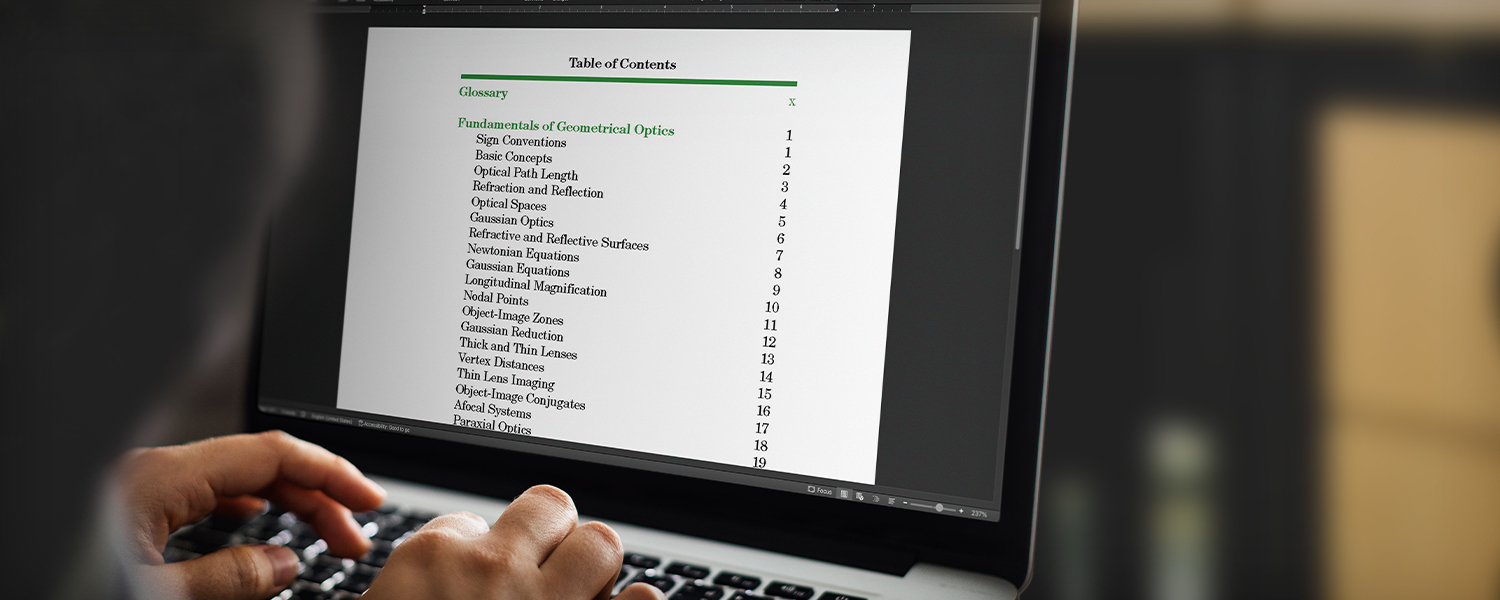We will supply you with a Word template into which you will place your material. The following format specifications provide further structure.
Content
- The manuscript should be no less than 80 pages, and no more than 115, without advance permission from SPIE. Include the following features:
- Preface (one page maximum).
- Tips, tricks, and related facts - these will be placed in colored boxes throughout the text.
- Bibliography of reference material, formatted accordingly. Any sources suggested as Further Reading should be listed separately.
- Glossary of frequently used symbols.
- Appendix pages dedicated to topics from fields of related interest. For examples, see the sample's appendices.
- Equation summary that includes all of the key equations from the text, with titles for each equation or group of equations.
- Each page should be filled, leaving no excess white space. Preferably, each page should be devoted to one topic.
- Topics should be grouped into thematic sections, similar to chapters in a book (see the Table of Contents in the sample).
- Each page should have the topic title at the top, centered and boldface.
- All text and figures must fit within a template page.
- Use 10-pt Century Schoolbook font for text, 10-pt Arial for figures.
- Use boldface font for key terms, which will also be the terms used in the index.
- Reference numbering, footnotes, or endnotes should not be used. Please contact your editor if you plan to use material borrowed from works not your own.
- Equations should also not be numbered but may be distinguished by proper names (Snell's law, the Lensmaker's formula, etc.). When using MS Word, use MathType for stand-alone formulas and Symbol font for inline symbols and formulas.
Figures
- Illustrations should be sized in a way that they do not dominate a page, and figures smaller than one-half page width should be placed along the right or left margin, with text wrapping. We recommend using Adobe Illustrator; Microsoft Visio, Powerpoint, or Word; or Inkscape to create your figures. Vector files and line art are much preferred over bitmap (raster) images.
- Figures should not have a caption or number.
- Each Field Guide has one assigned color that is used exclusively in the figures, along with black and shades of gray. Contact your Press Editor for the color of your Field Guide. This color will be used to emphasize parts of a figure or illustrate a concept in the text; a lighter gradiation of this color may be used to differentiate parts of the figure.
- Line art should be vector format or at least 1200 dpi, and halftones should be at least 300 dpi.
- Please send the high-resolution, original figures separately (as well as embedded in the document), named after their respctive topics, with directional suffixes where necessary, e.g., the figures on page 4 of the sample would be named "Refraction & Reflection_top" "Refraction & Reflection_middle," and "Refraction & Reflection_bottom."
This sample illustrates the layout of a typical Field Guide.
